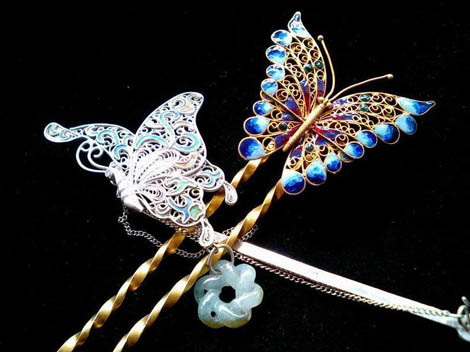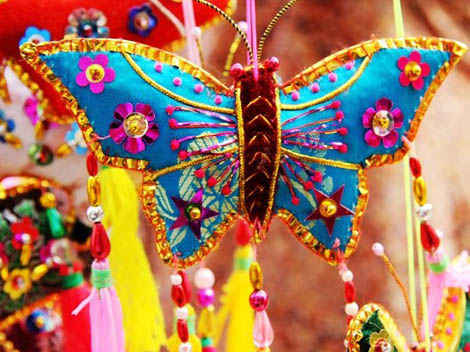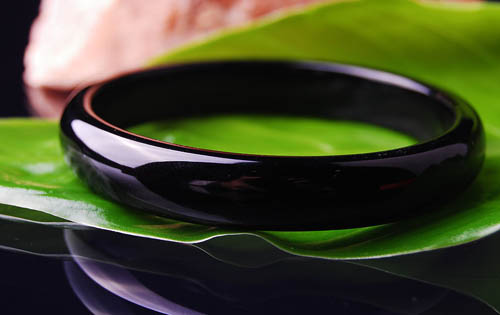Ten tokens of love for ancient Chinese maidens
In ancient China, engagement was an important social rite where man and woman confirm marital ties, next only to official marriage in significance. Marital ties were made by following “parents' order and on the matchmaker's word”. However, maidens in the age of adolescence had the tradition of pledging in love with tokens of love. Under the pressure of the society, young men and women would deliver tokens of love in private. Others just could not tell.
|
 |
The ancient tokens of love largely comprise bracelets, arm-wrapped gold, finger rings, earrings and perfume satchels. They might also be some small articles handed down from ancestors, or souvenirs meticulously chosen. No matter what they are and how valuable they might be, tokens of love always have some origins or become closely associated with the people. The spiritual implications of the tokens of love will surely not be weighed by their monetary values. Presenting tokens of love is just like submitting one’s aspirations, showing the persons they will be loyal for life.
 |
1.Bracelet
The time-honored bracelets could be traced back to the period when the matrilineal society started to transit to the patrilineal society. Archaeologists have found pottery and stone bracelet-like rings, which ancient people applied to decorate their wrists, at the Banpo Site (a Neolithic site of the Yangshao Culture at Banpo Village on the eastern outskirts of Xi'an) about 6,000 years ago and at the Xixiahou Neolithic Age Site of Qufu, Shandong Province. As shown in the unearthed bracelets, they were made of animal bones, teeth, stones and potteries. The bracelets are in the forms of circular tubes, circular rings, or combined by two semi-rings.
|
 |
In the Sui(AD581-618), Tang (AD618-907) and Song (960-1279) dynasties, it was very popular for women to decorate their arms with bracelets, known as armlets. The images of women wearing armlets are found in Taizong Meeting Tibetan Emissaries of Yan Benli and Court Ladies Adorning Their Hair with Flowers of Zhou Fang, painters of the early Tang Dynasty. Such decorations went beyond royal families and aristocrats. Common people also crazed about them. As historical records showed, Cui Guangyuan, a Tang Dynasty general, led troops to suppress Duan Zizhang, a rebel. The soldiers of Cui robbed people everywhere and cut the arms of women for taking away armlets. It suggested there were many women wearing armlets at the time.
After the Tang and Song dynasties, bracelets were made of better materials and techniques. There emerged gold and silver bracelets, jade-embedded bracelets, and precious stone-embedded bracelets. They were processed into the shapes of circular rings, stringed beads, twisted threads, braids and bamboos. When it came to the Ming and Qing dynasties and the Republic of China period, gold bracelets embedded with precious stones turned most popular. They were improved significantly in modeling and processing techniques.
Although bracelets were decorations on arms, they were the earliest evidence of people’s indistinct yet inherent love of beauty. Many scientists argue that bracelets came forth not because of the love of beauty. Instead, they were associated with totem worship and witchery rituals. Some historians say that since men assumed absolute rule in economic life, they cultivated the barbarian customs to tie down women with finger rings and bracelets. Such a metaphor existed for quite a long time.
2.Arm-wrapped gold
In the early days, armlets largely appeared in North China areas, where people had gold bars or silver bars hammered flat, and coiled them in screw loops. The loops might diversify from three circles to five circles and even eight circles. They were separated into the decorated type and plain type. Those engraved with decorative patterns were called decorated bracelets, and those without decorative patterns were called plain bracelets. No matter what angles they are observed, they present several rounds of circular rings, as if the women wear a number of bracelets. In pictograph, the Chinese character for bracelet comprises gold and river.
3. Finger ring
In ancient days, unmarried women would not wear any finger rings, because finger rings were tokens of marital ties or tokens of love. This token, smallest compared with other tokens, was yet the heaviest in the mind of women. This remains true up to these days. Offer your hand, and the man on your opposite will wear the ring for you. After that, you might live happily with it all your life, or weep upon it with broken heart some day.


















